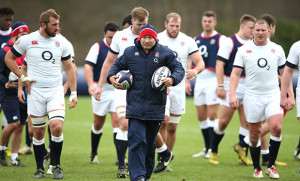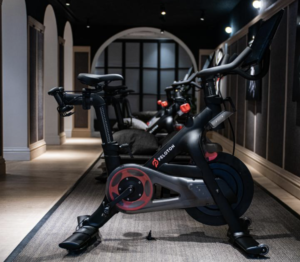England won against Scotland and that’s important in the 6 Nations, but what can we glean from Eddie’s first team performance?
 Ford played like he does for Bath and their backs don’t score tries. He badly needs a hard running 12! Progress in the 12 channel creates shape for the backs to operate. Joseph can’t run the “old Jeremy Gustcot” overs line because the attack is so flat.
Ford played like he does for Bath and their backs don’t score tries. He badly needs a hard running 12! Progress in the 12 channel creates shape for the backs to operate. Joseph can’t run the “old Jeremy Gustcot” overs line because the attack is so flat.
Both wingers have try scoring ability and it was good to see them looking for the ball, but why did Watson grubber kick through in the opposing 22? I know, I know, but let’s build pressure? Farrell kicks goals and always gives away at least one silly penalty.
England’s first try was a penalty at the scrum to Scotland as Care was in front of the ball when he obstructed Laidlaw and created the hole for Billy. The second try was a coaching lesson from Mako! He almost ran the perfect circle ball line to create the try for Nowell. As it was it was more sleight of hand.
Ford can make this play. I’ve seen him do it for Bath recently and it is a penetrative play but he isn’t learning from it!! Wasps do it effectively with Eliot Daly. Used correctly the circle ball is more specific than the loop, creates an overlap as well as affording the receiver the acceleration option into space, because the ball carrier holds the inside defender.
Up front it was very much culture and tradition. Eddie had decided it was going to be that way because Cotter has Scotland better at the breakdown. Apart from Hartley, Eddie picked a pack who got stuck in! Physical rather than creative yardage. Hartley’s throwing in is accurate but the colour of his kit (clean) as he leaves the field mirrors his involvement elsewhere, same when he plays for Saints.
Interesting, as with Cheika and Moore, Eddie took off the captain before full time? A little mind game? If England continue to pick Vunipola at 8 they will have to play a tight game close to the support because Haskell and Robshaw can’t support wide out at the tackle contest and you would not play that combination in June in OZ?
Scotland have improved as mentioned, but lack “class” at 10, 12 and 13 and at the start of the second half were awarded a penalty, in front, 22 out at 6-7, but ran the advantage.
Both sides will mention accuracy and weight of pass in review. Some of which was appalling! A reflection on the frenetic start to a game. A game which had little shape.
Then there is the referee. As studio pundit Tom Shanklin said “you have to plan for them also”….all agreed?”
Wales started with two number 7s and this may become a trend because stealing the ball at the breakdown is a vital skill. New Zealand did it 54 times in the World Cup.
If you like intensity, passion and lots of phase play then Ireland v Wales ensured your money well spent. However multiple phase rugby without penetration has to be a concern and sadly a Northern hemisphere problem!
Backs aren’t attacking the inside shoulder and the drift defence is winning! In the 78th minute Payne defended 4 Welsh backs because no one attacked his inside shoulder and squared him up before passing! In the 64th minute Sexton ran a loop, behold…penetration!!
 Generally running straight in support, then angling in to receive the ball, holds your defender and you receive the ball in space; gives you a chance to penetrate? As it is the second man play is becoming the easy option in phase play attack and the drift defenders just escort you towards the touchline.
Generally running straight in support, then angling in to receive the ball, holds your defender and you receive the ball in space; gives you a chance to penetrate? As it is the second man play is becoming the easy option in phase play attack and the drift defenders just escort you towards the touchline.
All attack would be easier if there was more go forward at the tackle contest instead of this monotonous run into someone and go to ground! The more defenders we can involve whilst going forward the more space we create elsewhere! Forwards with footwork or the ability to spin going into contact stand out! Faletau demonstrates it occasionally but it is not used enough. Let’s at least try to get the ball beyond the advantage line.
Inside support was also absent without leave. Only once did I see an outside break attempted, followed by a lower body tackle and a pop ball to an inside support player. Devastating if done correctly!! I wonder how many times it is done at training.
The missing skills in the two highlighted games were on show in Paris although spasmodically. Inside support and offload lead to the first French try and France continue to stretch the boundaries of basic technique. Don’t ever be surprised by French flair as it comes in many forms. They are masters at close quarter support play and when looping on to the ball in support they generate real pace. So discard the coaching manual when you watch them.
Italy’s coach Brunel is widely and well respected and Italy produced a coached performance with verve and unpredictability as well as organised forward play. I liked the way they ran behind the ruck or maul to change the point of attack.
Both teams will ask questions of their opponents. On the Italian menu this week, “how to prepare a winning drop goal”.








 When most people hear the word “Peloton” they think of an expensive black bike with shiny red buttons and that controversial commercial where the husband gifted his wife a Peloton for Christmas.
When most people hear the word “Peloton” they think of an expensive black bike with shiny red buttons and that controversial commercial where the husband gifted his wife a Peloton for Christmas. If the app interests you, Peloton is currently offering a 30 day FREE TRIAL, so why not give it a try? Check it out
If the app interests you, Peloton is currently offering a 30 day FREE TRIAL, so why not give it a try? Check it out 

 This article would not be complete, however, if we did not acknowledge some of the delivery issues that have been plaguing Peloton over the last year. Most of the delivery issues seem to affect U.S. deliveries, however, the UK deliveries have been affected as well.
This article would not be complete, however, if we did not acknowledge some of the delivery issues that have been plaguing Peloton over the last year. Most of the delivery issues seem to affect U.S. deliveries, however, the UK deliveries have been affected as well.







